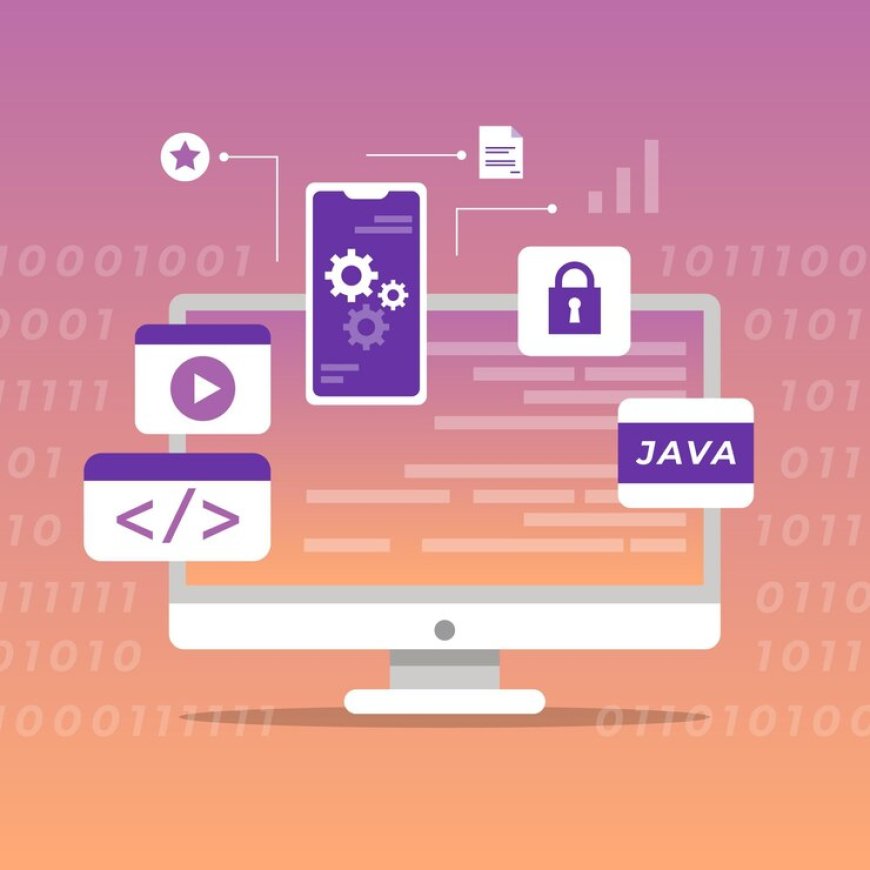Secure Coding Practices for Web Development
Learn essential secure coding practices for web development to safeguard your applications and protect against security threats.

Secure coding practices for web development refer to a set of guidelines and techniques aimed at developing secure and resilient web applications. These practices involve following best practices, adhering to secure coding principles, and implementing security measures to mitigate common vulnerabilities and protect against malicious attacks. By prioritizing security during the development process, developers can build robust and trustworthy web applications in today's increasingly interconnected and threat-prone digital landscape.
Importance of secure coding in today's digital landscape
-
Secure coding helps safeguard sensitive user data, such as personal information, financial details, and login credentials, from unauthorized access or data breaches.
-
By following secure coding practices, developers can reduce the risk of common vulnerabilities, such as cross-site scripting (XSS), SQL injection, and cross-site request forgery (CSRF), which can be exploited by attackers.
-
Building secure web applications instills confidence in users, enhancing their trust in the application and the organization behind it.
-
Secure coding is crucial for compliance with data protection and privacy regulations, such as the General Data Protection Regulation (GDPR) and the Payment Card Industry Data Security Standard (PCI DSS).
-
Effective security measures in web development help prevent financial losses, legal liabilities, and reputational damage caused by security incidents and breaches.
-
With the continuously evolving threat landscape, secure coding practices help protect web applications against emerging vulnerabilities and attack vectors.
-
By minimizing the likelihood of successful attacks, secure coding practices contribute to the uninterrupted operation of web applications and the continuity of business processes.
Common Security Vulnerabilities in Web Development
In web development, several common security vulnerabilities can pose significant risks to the security of web applications. It is essential to be aware of these vulnerabilities and implement appropriate measures to mitigate them. Some of the most prevalent security vulnerabilities in web development include:
-
XSS occurs when malicious scripts are injected into web pages and executed by users' browsers. This vulnerability allows attackers to steal sensitive information, manipulate web content, or perform unauthorized actions on behalf of users.
-
SQL Injection involves inserting malicious SQL statements into web application input fields. If not properly validated or sanitized, these statements can manipulate the database and compromise sensitive data, leading to unauthorized access or data loss.
-
CSRF occurs when attackers trick authenticated users into unknowingly performing unintended actions on web applications. By exploiting this vulnerability, attackers can perform actions on behalf of users without their consent, leading to data manipulation or unauthorized operations.
-
Insecure configurations of web servers, frameworks, or application components can expose vulnerabilities that attackers can exploit. Common misconfigurations include default settings, unnecessary open ports, or inadequate access controls, which can compromise the confidentiality, integrity, or availability of web applications.
-
Inadequate session management can lead to session hijacking or session fixation attacks. Attackers can steal valid session identifiers or manipulate session data, allowing unauthorized access to sensitive user accounts or actions.
Secure Coding Principles and Best Practices
-
Validate and sanitize all user input to prevent injection attacks.
-
Encode output data to prevent cross-site scripting (XSS) attacks.
-
Use parameterized queries or prepared statements to prevent SQL injection attacks.
-
Apply the principle of least privilege by granting only necessary permissions to users and components.
-
Implement strong and secure authentication mechanisms, such as hashing and salting passwords, and enabling multi-factor authentication.
-
Use secure session handling techniques, including generating secure session IDs, enforcing session timeouts, and protecting against session fixation attacks.
-
Implement proper error handling and logging mechanisms to detect and respond to potential security incidents.
-
Validate file uploads, restrict file permissions, and sanitize file names to prevent file-related vulnerabilities.
-
Use secure protocols (HTTPS) and enforce data encryption for sensitive information transmitted between clients and servers.
-
Keep software libraries, frameworks, and components up to date with the latest security patches.
-
Perform regular security testing and code reviews to identify and address vulnerabilities before deployment.
-
Educate developers on secure coding practices, security threats, and best practices for secure web development.
By adhering to these secure coding principles and best practices, developers can reduce the risk of security vulnerabilities and build more robust and resilient web applications.
Security Testing and Code Reviews
Importance of security testing
Security testing is crucial in web development to identify and address potential vulnerabilities and weaknesses in the application's security posture. It helps ensure that adequate security measures are in place to protect sensitive data, prevent unauthorized access, and mitigate the risk of security breaches.
Types of security testing
There are several types of security testing that can be conducted to assess the robustness of a web application's security controls. These include:
-
Simulates real-world attacks to identify vulnerabilities and exploit them to gain unauthorized access.
-
Automated scans that detect and report known security vulnerabilities in the application.
-
Manual inspection of the source code to identify security flaws, adherence to secure coding practices, and compliance with security standards.
Conducting regular code reviews for security
Regular code reviews are essential for identifying and addressing security weaknesses in the application's source code. Security-focused code reviews involve analyzing the code to identify vulnerabilities, insecure coding practices, and potential points of exploitation. It helps ensure that secure coding practices are followed, proper input validation and output encoding are implemented, and potential security risks are mitigated.
Secure Coding Tools and Resources
Static code analysis tools:
Static code analysis tools automatically scan the source code of an application to identify potential security vulnerabilities and coding errors. These tools analyze the code without executing it and can provide insights into common coding mistakes, insecure practices, and potential vulnerabilities. Examples of popular static code analysis tools include SonarQube, FindBugs, and Fortify.
Security frameworks and libraries:
Security frameworks and libraries provide developers with pre-built components and modules that follow secure coding practices. These frameworks and libraries often include features for input validation, authentication, access control, encryption, and more. By using trusted and well-maintained security frameworks and libraries, developers can leverage tested and proven security functionalities, reducing the risk of introducing vulnerabilities. Examples of security frameworks and libraries include Spring Security, OWASP ESAPI, and Bcrypt for password hashing.
Secure coding guidelines and standards
Secure coding guidelines and standards offer best practices and recommendations for writing secure code. These guidelines cover various aspects of secure coding, such as input validation, error handling, access control, and secure communication. Adhering to established secure coding guidelines, such as those provided by OWASP (Open Web Application Security Project) or CERT (Computer Emergency Response Team), helps ensure that developers follow recognized security practices when developing web applications.
Developer Education and Awareness
Developer education and awareness play a crucial role in promoting secure coding practices. By providing training on secure coding principles, organizations can equip developers with the knowledge and skills needed to identify and address potential security vulnerabilities in their code. It is important to foster a security-first mindset among developers, emphasizing the significance of considering security throughout the development lifecycle. Keeping up with the latest security trends and vulnerabilities is also essential, as it enables developers to stay informed and adapt their coding practices accordingly. By prioritizing developer education and awareness, organizations can enhance their overall security posture and reduce the risk of security breaches in web development projects.
Secure Coding in Different Web Development Frameworks
Secure coding practices can vary across different web development frameworks, but there are some common best practices that can be applied to ensure security regardless of the framework being used. When working with popular frameworks like React, Angular, or Django, it is important to follow these guidelines:
-
Input validation is crucial to prevent vulnerabilities such as XSS and SQL injection. Use framework-specific mechanisms to validate and sanitize user input before processing it.
-
Utilize the authentication and authorization mechanisms provided by the framework to ensure that only authorized users have access to sensitive data and functionalities.
-
Follow the recommended practices for session management, including secure session storage, expiration policies, and protection against session fixation attacks.
-
Leverage the built-in features and functionalities of the framework to prevent XSS vulnerabilities. Properly encode user-generated content and utilize template engines that automatically escape data.
-
Implement CSRF protection mechanisms provided by the framework, such as generating and validating anti-CSRF tokens, to safeguard against unauthorized actions initiated by malicious websites.
-
Ensure that security-related configurations, such as access control, encryption settings, and sensitive data storage, are appropriately configured and protected.
-
Regularly update the framework and any third-party libraries used in your application to benefit from security patches and fixes.
By adhering to these best practices, developers can enhance the security of their web applications regardless of the specific framework they are working with.
Secure coding practices are essential in web development to mitigate security risks and protect sensitive data. By following these practices, developers can reduce the likelihood of vulnerabilities and unauthorized access. The key takeaways for developers include validating user input, implementing strong authentication and authorization, conducting security testing and code reviews, utilizing secure coding tools and resources, and continuously educating themselves about emerging security trends. As the web development landscape evolves, developers should stay updated with the latest security measures and adapt their practices accordingly. By prioritizing security in their coding approach, developers contribute to a safer digital environment for users and organizations alike.





































